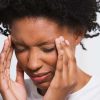- Empty cart.
- Continue Shopping
Varicose Veins: Causes and Treatments for Women

Varicose veins are a common vascular condition that can affect both men and women, but women are more frequently affected. These enlarged and twisted veins, often appearing on the legs, can cause discomfort and affect the appearance of the skin.
Causes of Varicose Veins in Women
Several factors contribute to the development of varicose veins in women, including:
1. Hormonal Changes
Hormonal fluctuations are a significant factor in the development of varicose veins. Women experience hormonal changes during pregnancy, menopause, and with the use of hormonal birth control methods. These changes can weaken vein walls and valves, leading to the formation of varicose veins.
2. Pregnancy
Pregnancy places increased pressure on the circulatory system, as the body has to circulate more blood to support both the mother and the developing fetus. This increased pressure can lead to the development of varicose veins, particularly in the legs.
3. Genetics
A family history of varicose veins increases the risk of developing the condition. If a woman’s parents or grandparents had varicose veins, she may be more predisposed to them.
4. Occupational Factors
Jobs that require prolonged periods of standing or sitting can contribute to the development of varicose veins. Women in occupations such as nursing, teaching, or retail may be at a higher risk.
5. Obesity
Excess body weight places additional pressure on the veins, increasing the risk of varicose veins.
6. Aging
As women age, their veins may lose elasticity, which can lead to the development of varicose veins.
Treatment Options for Varicose Veins in Women
There are various treatment options available to manage varicose veins in women, depending on the severity and symptoms. These treatments aim to improve the appearance of the veins, alleviate discomfort, and prevent complications. Common treatment options include:
1. Conservative Measures
For mild cases of varicose veins, lifestyle changes and conservative measures can be effective:
- Compression Stockings: Wearing compression stockings can help improve blood flow and reduce swelling and discomfort.
- Exercise: Engaging in regular physical activity, particularly exercises that strengthen the leg muscles, can improve blood circulation.
- Elevating Legs: Elevating the legs when sitting or resting can help reduce swelling and discomfort.
- Weight Management: Maintaining a healthy weight can reduce the pressure on the veins.
2. Minimally Invasive Procedures
For more significant varicose veins, minimally invasive procedures may be recommended:
- Endovenous Laser Treatment (EVLT): This procedure uses laser energy to close off and seal varicose veins.
- Radiofrequency Closure: Radiofrequency energy is used to heat and close off the affected veins.
- Sclerotherapy: A solution is injected into the vein, causing it to collapse and eventually be reabsorbed by the body.
3. Surgical Intervention
In severe cases or when other treatments are ineffective, surgical procedures may be necessary:
- Vein Stripping: In this surgical procedure, the affected vein is removed through small incisions.
- Ambulatory Phlebectomy: This minimally invasive surgical technique involves the removal of varicose veins through small incisions.
- Ligation and Vein Removal: Ligation is the tying off of the affected vein, which is then removed.
Prevention and Lifestyle Tips
Women can take steps to reduce the risk of developing varicose veins or manage their symptoms:
- Maintain a healthy weight through a balanced diet and regular exercise.
- Avoid prolonged periods of sitting or standing; take breaks to move around.
- Elevate the legs when resting or sleeping.
- Wear compression stockings as recommended by a healthcare provider.
- Stay hydrated to support healthy blood circulation.
- Avoid wearing tight clothing that restricts blood flow.
In Conclusion, Varicose veins are a common condition among women, often caused by a combination of genetic predisposition, hormonal changes, and lifestyle factors. While they may not always be preventable, various treatment options are available to manage varicose veins and alleviate discomfort. If you suspect you have varicose veins or are experiencing symptoms, consult with a healthcare provider or a vascular specialist for a proper evaluation and personalized treatment plan.








